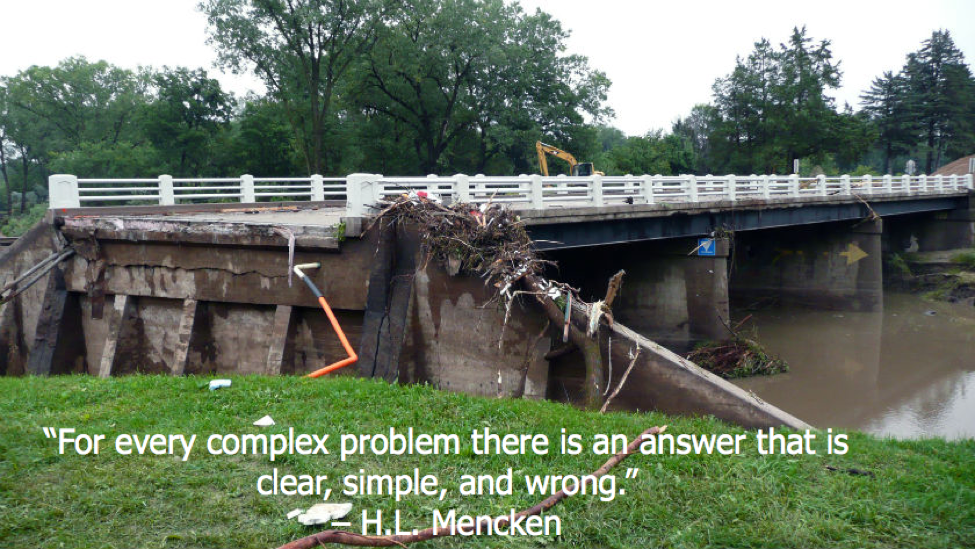Legendary General Motors CEO Alfred Sloan at the end of a GM senior executive meeting once said, “Gentlemen, I take it we are all in complete agreement on the decision here,” and everyone nodded their heads in agreement. “Then,” he said, “I propose we postpone further discussion of this matter until the next meeting to give ourselves time to develop disagreement, and perhaps gain some understanding of what the decision is all about.”
What Alfred Sloan understood was, that with critical decisions, fast is slow. While the decision may be fast in coming, the sought-after improvements may be slow (or never) to follow.
In today’s fast-paced, ever-fluctuating marketplace, managers are often confronted with situations that require a fast decision. But without the proper preparation (as Alfred Sloan recognized), making a fast decision can often backfire. Managers’ emotions or egos may rule. But these characteristics cannot change a market reality.
Sound decisions in crucial moments are the products of consistent, proper preparation. Proper preparation isn’t just mental; it is a matter of organization design. The enterprise is a complex system of processes, people, and structures that produces a product or service. The complex system must be designed to deliver better outputs just as a garden must be nurtured to yield a bumper crop.
Organizational Elements That Can Shape Decisions
Designing an organizational decision-making capability requires bringing into alignment the following elements:
- Stakeholder Monitoring System: A system to keep you in touch constantly with the market and key stakeholder needs. Your organization exists to meet stakeholder needs. Neglect these and you start to become irrelevant in the marketplace. Fulfilling key stakeholder needs as they continue to evolve is your lifeblood.
- Internal Information Flow Up, Down, and Laterally: Information flow can unite and align different parts of the system or it can isolate them from each other and produce disjointed, even conflicting efforts. Too often the experiences at the top and bottom of the organization are very different worlds. Organizational communication patterns need to shape a common strategy, deliver relevant performance feedback, and stimulate ideas for improvement through open dialogue up, down, and among peers.
- Decision Making Process and Structure: Exactly how will the decision be made? What information must be available? What priorities must be addressed? Which key player(s) must be involved? Who has the final say? How are the answers to these and other questions linked into a clear process that is both efficient and effective? A team process for making decisions usually outperforms a solitary decision maker’s efforts if the team is competent, has good mutual trust, and is absolutely committed to upholding the priorities.
- Reward Company > Self: Sometimes management teams make decisions that are acceptable to competing individual self-interests rather than fulfilling the stakeholders’ and the company’s needs. If self-interests rule, you can forget about “wasteful efforts” of monitoring stakeholder needs or keeping open information channels. All the good these systems could provide will be strangled by individual hidden agendas.
- Skills: Monitoring a system is very different than adding up a balance sheet. Managers need to become competent in evaluating their business numbers, in recognizing the impact of their conduct on corporate values, and in a factual review of how well the company is meeting its key stakeholder needs. These skills are a hybrid of analytical and relational competencies.
A Success Story
NEH Philippines, a banana exporter, is a good example of a well-designed, decision-making process. In 2009 general manager Jeroen de Haas and his executive team were being severely challenged by the worldwide economic recession. Their market research indicated that if they did not improve their bananas’ quality while simultaneously cutting costs, their company’s survival was at risk. NEH had done many things to succeed in the market, but something more drastic was needed now.
The HPO Centre, headed by Dr. André de Waal in the Netherlands, was commissioned in 2012 to do a whole systems diagnosis of NEH. These four Attention Points were recommended by the HPO Centre to help NEH overcome the recession’s challenges:
- Achieve consistency in all processes. Achieving high quality at low cost is only sustained by consistent work processes in all areas of the business. The diagnosis indicated NEH’s processes needed to be aligned continuously and simplified.
- Create strong leadership. Filipino management is typically sensitive, loyal, and indirect. But to make the drastic changes, NEH leaders and all associates needed to place the company’s survival ahead of their own personal comfort zone. Leaders needed to hold people accountable for their results. And everyone needed to contribute ideas and solutions to deliver better quality at lower costs.
- Deal positively with mistakes. It was the NEH culture for managers to tolerate and be too forgiving of mistakes. Reward systems did not differentiate between strong, good, or poor performers. Better incentives were needed to get strong performers to step up to the recession’s challenges.
- Improve dialogue throughout NEH. One missing element that ran through the other three attention points was Dialogue. Associates at the front line needed to be listened to by those above them in the hierarchy. Leaders needed to be listened to so that everyone understood the business priorities and actual company results. And everyone needed to be providing insights, ideas, suggestions, and feedback for improving quality and lowering costs so that (like Alfred Sloan’s executive team) they had a better understanding of what they needed to do to overcome their dilemma.
NEH redesigned itself in all five design areas referred to earlier, but dialogue was the lubricant that synergized all their improvement efforts. Insights from those at all levels led to improvement suggestions and timely corrective actions. In the next three years NEH did significantly improve its quality, lower its costs, and build even greater trust with all its internal and external stakeholders. Oh, by the way, NEH’s profits also increased by 500 percent!

